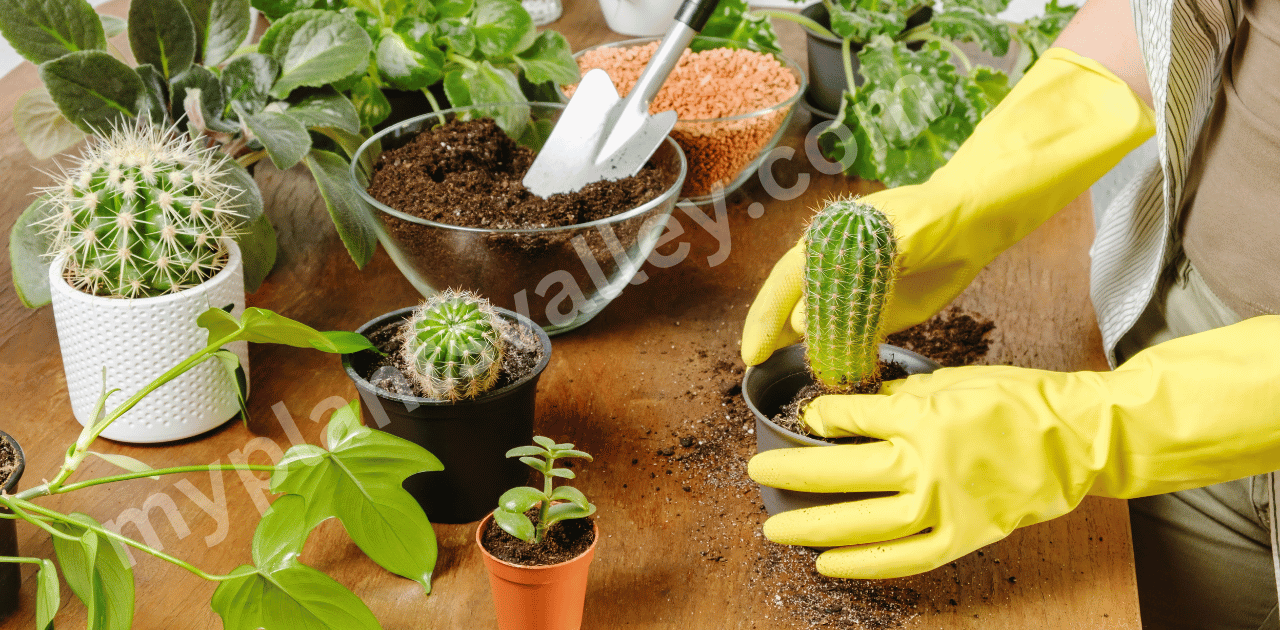Replanting a cactus can be a delicate endeavor, reminiscent of orchestrating a symphony with a handful of needles. The art lies not just in the mechanics of moving the plant, but also in understanding its unique biology and habitat preferences. This step-by-step guide will walk you through the process, ensuring that your spiky companion transitions smoothly from one pot to another, much like a traveler settling into a new home.
Whether you’re revitalizing a wilting specimen or simply refreshing its surroundings, knowing how to replant a cactus is essential. The journey encompasses several key stages, each requiring mindfulness and care.
As we embark on this horticultural adventure, let’s delve into the intricate steps involved in successfully moving your cactus.
Preparing for the Move: Gather Your Tools
Before diving headfirst into the replanting process, it is crucial to gather the appropriate tools and prepare your workspace. Think of this stage as laying the groundwork for a journey; without the right equipment, the journey may falter.
Start by collecting:
- A new pot with drainage holes: Ensure it is one size larger than the current pot. The size difference allows for adequate growth and prevents root binding.
- Cactus soil mix: This specialized substrate mimics the arid environments cacti thrive in, ensuring proper drainage and aeration.
- Gloves: Protect your hands from sharp spines and potential irritation.
- Sticks or tongs: These will assist in maneuvering the cactus during the transfer without direct contact.
- Water: Hydrate the cactus one day prior to replanting for easier handling, ensuring it is not swollen with excess moisture during the process.
Once equipped, choose a well-ventilated area to begin the replanting process. This could be outdoors or in a sunlit room, reminiscent of the natural habitat from which your cactus hails.
Executing the Move: The Art of Transference
As you embark on the physical relocation of your cactus, remember that precision and gentleness are of paramount importance. Like a delicate ballet, every step must be deliberate.
Begin by carefully removing the cactus from its original pot:
- Gently grasp the cactus using your gloved hands or utilize sticks or tongs to avoid direct contact with the spines.
- Tilt the pot to one side and gently coax the cactus out, tapping the sides of the pot lightly if necessary. Take care not to damage the roots.
Once dislodged from its former confines, assess the root system. Healthy roots should appear white and firm. Should you find any damaged or rotten roots, trim them away with sterilized scissors, akin to pruning a tree to enhance its vitality.
Now, place the cactus in its new abode. It is important to prepare the new pot with a base layer of cactus soil:
- Spread a small amount of soil at the bottom, creating a cushioned bed suitable for your cactus.
- Position the cactus upright in the center, ensuring that it sits at the same soil depth as it occupied in the previous pot. This promotes stability and helps maintain its health.
Gently fill in the gaps with additional cactus soil, allowing the particles to settle around the roots. Avoid packing the soil too tightly; cacti require adequate aeration to thrive, much like breathing room for a burgeoning star.
Post-Transfer Care: Nurturing Your Cactus
The transition does not end with the successful replanting. The days following the move are critical to ensuring your cactus adjusts well to its new environment.
Consider the following care tips:
- Wait to water: Refrain from giving your cactus water immediately after replanting. Allow it to acclimate to its new home for about a week, similar to how one might allow a guest to settle in before offering refreshments.
- Provide adequate light: Place your cactus in a location where it will receive bright, indirect sunlight. While they thrive in light, full direct sun can be overwhelming post-planting.
- Monitor temperature: Cacti prefer warm conditions, so avoid placing them in chilly drafts. Think of your cactus as a sunbather enjoying a summer’s day.
In the following weeks, observe your cactus for signs of acclimatization. Healthy growth will manifest as the plant stabilizes. Watch for new spikes and blooming flowers, akin to witnessing a phoenix rise from the ashes.
Conclusion: The Lifelong Bond with Your Cactus
Replanting a cactus is more than a simple gardening task; it is a manifestation of your commitment to nurturing and sustaining life. This solemn bond fosters not only the longevity of your vibrant companion but also deepens your appreciation for the intricate beauty of these resilient plants. As you watch your cactus flourish in its new home, revel in the knowledge that you have successfully navigated the delicate balance of care, attention, and artistry.
By embracing this process, you are not just a caretaker; you become a custodian of nature’s artistry, allowing the story of your cactus to unfold with each passing day.





Leave a Comment